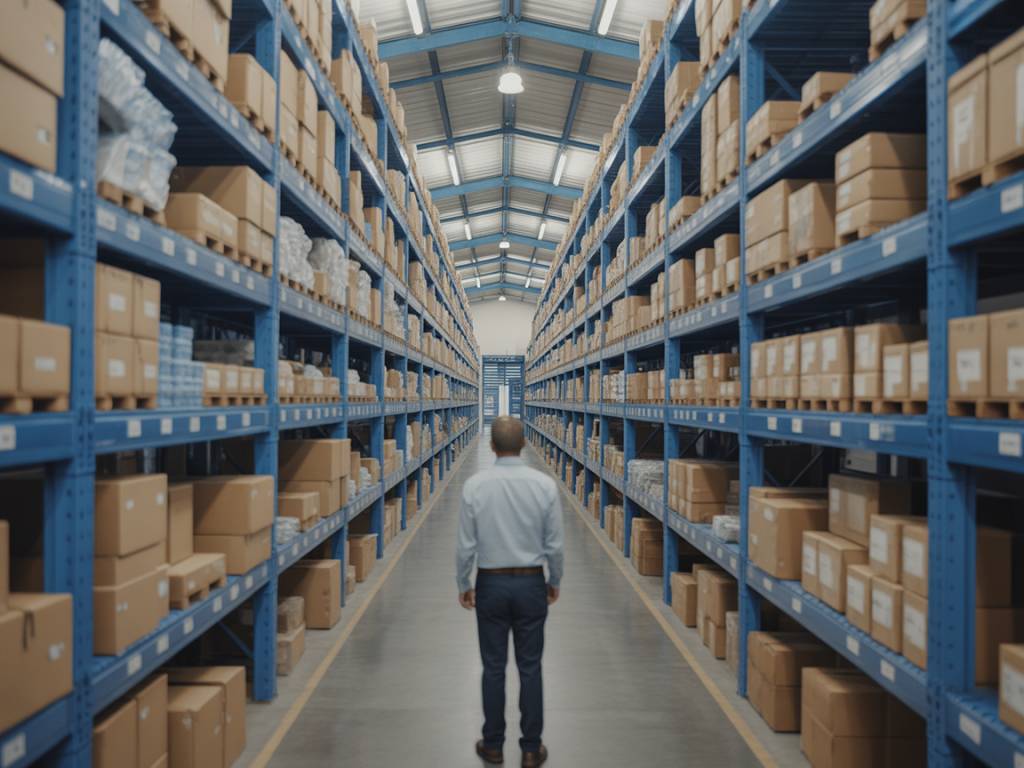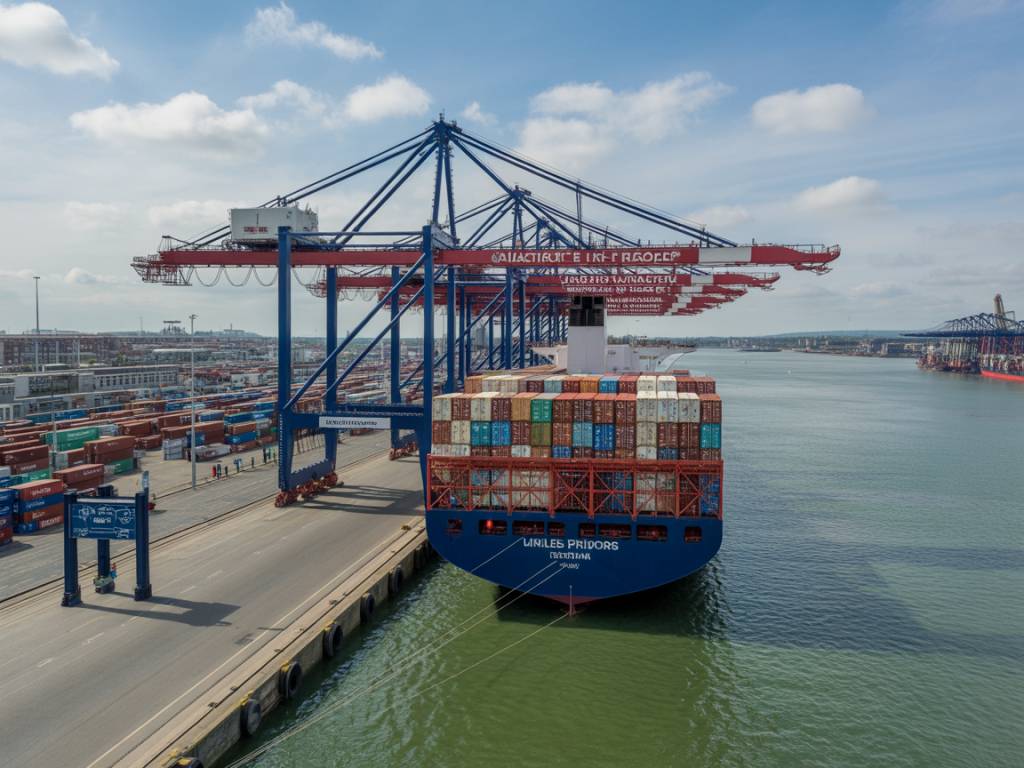AI at the Core of Supply Chain Modernization
From warehouse to last-mile delivery, artificial intelligence is no longer a futuristic concept—it’s a pragmatic tool reshaping the entire supply chain landscape. As global pressures increase on operational efficiency, visibility, and cost control, AI emerges not as a luxury, but as a necessity for businesses seeking resilience and agility. For professionals in logistics and industry, understanding how AI integrates into daily operations is no longer optional—it’s fundamental.
So, what’s really changing on the ground for supply chain professionals? Let’s break it down with operational clarity, backed by data and field insights.
Predictive Analytics: Anticipating Instead of Reacting
Forecasting demand used to rely heavily on historical data and seasonal trends. However, in volatile markets, these models often fall short. Enter AI-driven predictive analytics. These systems ingest massive datasets—including market conditions, weather forecasts, geopolitical events, supplier behavior, and real-time sales—to fine-tune demand forecasting.
Take the example of Decathlon, the French sporting goods retailer. By embedding AI into its demand planning systems, the company reportedly achieved a reduction of nearly 20% in stockouts, while simultaneously cutting excess inventory by 15%. The system adapts daily, reacting in near real-time to shifting patterns.
The result? Fewer overstocks, fewer urgent replenishments, and smoother distribution rhythms. In a sector where “too much” can be as damaging as “not enough,” this ability to predict accurately makes a tangible operational difference.
AI-Powered Inventory Optimization
Warehouses are evolving from static storage spaces to dynamic orchestration hubs. AI algorithms now help organizations determine what to store, where, and in what quantity—with precision.
One standout case is Siemens, which uses AI in its electronic components division to manage over 100,000 SKUs across its European hubs. Rather than relying on traditional FIFO (first-in-first-out) methods, Siemens’ AI system continuously recalibrates inventory placement based on sales velocity, supplier reliability, and component shelf life.
According to a field manager we interviewed during the Logistics Forum in Frankfurt, “The AI doesn’t just save time—it thinks in ways that humans can’t. It finds patterns in returns rates or cross-docking errors that we used to overlook.” And when scaled across a multinational footprint, these insights translate directly into lower holding costs and faster order processing.
Smarter Transportation Routing
Transportation costs can account for over 50% of total logistics expenditures. AI steps in with route-planning algorithms that analyze traffic updates, fuel prices, delivery windows, and vehicle capacity—all in real time. The upshot: fewer empty kilometers and faster lead times.
DHL, for instance, uses its AI engine “SmartRouting” in dozens of urban centers worldwide. Results have been telling—delivery speed improved by up to 25%, with a parallel drop in mileage (and fuel use) of around 10%. Beyond environmental benefits, the system also flags possible delays before they occur—offering dispatchers alternative paths instantly.
For SMEs concerned about cost of entry, cloud-based logistics platforms now offer modular AI route solutions starting at just a few hundred euros per month. In practical terms, it’s an affordable route to cost leadership and customer retention.
AI in Risk Management and Supplier Monitoring
2020 and 2021 taught everyone a hard lesson: global supply chains are fragile. Whether due to port congestion, raw material shortages, or geopolitical disputes, disruptions are now frequent—and expensive. To mitigate this, AI tools are gaining ground in supplier monitoring and risk evaluation.
Platforms like Resilinc and Prewave use machine learning to scan global news, social media, and trade bulletins in over 100 languages. These systems can alert procurement officers about potential supplier concerns—long before traditional KPIs show red flags.
A French aerospace supplier shared off the record, “Our AI dashboard flagged a medium-risk tier 3 supplier in Malaysia two months before their factory fire. That gave us weeks to react and reroute procurement.” That’s not just smart—that’s a strategic advantage.
Warehouse Automation: Vision Systems and Robotics
Inside the warehouse, AI is supercharging automation beyond what was possible with traditional programmable systems. Computer vision algorithms linked to robotic pickers now identify, locate, and grip products with increasing variety and precision.
Ocado, the British online grocery pioneer, stands out here. Their warehouses feature AI-controlled robotic arms that can pick fragile items like eggs or avocados by analyzing shape, weight, and resistance—capabilities modeled partially on neural networks.
Closer to industrial applications, Bosch employs AI-augmented AGVs (Automated Guided Vehicles) in their Stuttgart facility. Unlike traditional AGVs, which stick to pre-defined routes, these AI models adapt paths in real-time based on floor congestion or task prioritization—reducing unit load times by up to 30%.
Enhancing Customer Satisfaction Through AI
AI also interfaces directly with the customer side, particularly in areas like estimated delivery times and service transparency. Algorithms now determine dynamic ETAs based on order complexity, warehouse workload, and route risks—resulting in more accurate delivery promises.
Retailers like Zalando and Carrefour have integrated AI chatbots capable of resolving up to 80% of delivery queries autonomously. These systems learn over time, refining their responses and escalating only truly complex issues to human agents.
Why does this matter operationally? Because experienced human service reps are expensive and scarce. Letting AI take over first-line responses frees up skilled staff for value-added problem solving, shortening cycle times and enhancing buyer satisfaction simultaneously.
Barriers to Adoption Still Exist
Despite the promising applications, integrating AI into supply chains is not without challenges. Among them:
- Data quality: Poor or inconsistent data invalidates AI output. Many firms still work with siloed systems or outdated ERP software.
- Talent shortage: AI-savvy supply chain professionals are in high demand and often hard to recruit outside urban hubs.
- Integration complexity: Layering AI atop legacy systems demands careful orchestration—especially in regulated sectors like pharmaceuticals or defense.
But encouragingly, modular AI tools with APIs are rapidly lowering the technical barrier. And as machine learning models become increasingly user-friendly, the gap between tech teams and operations staff continues to close.
Looking Ahead: A Shift in Roles and Mindsets
If the warehouse is run by AI, and transport routes are plotted by neural nets—what’s left for human professionals? Quite a bit, actually.
As automation scales, the most valuable human contributions shift toward strategic oversight, problem-solving, and supplier collaboration. Roles evolve from “doing” to “optimizing.” AI might point out that truck 57 is late due to roadworks—but the decision to reroute, delay, or switch suppliers remains squarely in human hands.
At its best, AI doesn’t replace supply chain professionals; it enhances their capabilities, enabling faster decisions, supported by richer data. Those who master this collaboration—between human judgment and machine insight—stand to reap significant competitive advantages.
In a world where disruptions make headlines weekly, AI offers not just efficiency, but resilience, visibility, and confidence. And in supply chain management, where margins are thin and expectations high, those attributes are gold dust.
This transformation is not about tomorrow—it’s happening now. The only question that remains: where are you on the journey?




